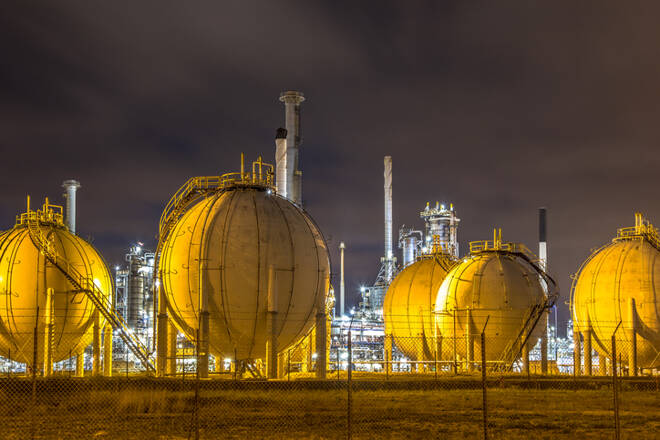Advertisement
Advertisement
Natural Gas Price Fundamental Daily Forecast – Demand Destruction Still Painting Bearish Picture
By:
The main trend is up on the daily chart, but the recent rally has stalled at $2.100, just slightly below the last two main tops at $2.108 and $2.104. This is a solid wall of resistance, but also a potential breakout area.
Natural gas futures are inching lower on Friday, following the previous session’s steep plunge. Natural Gas Intelligence (NGI) said yesterday, “Major moves along the natural gas futures curve continued Thursday, with early selling intensifying once traders had time to digest the latest storage data.“
There was very little movement in spot gas prices, however, with little change in weather patterns seen for the end of the week. NGI’s Spot Gas National Average fell a half-cent to $1.705.
Bespoke Weather Services indicated that it would need to see at least some reopening of the economy in order to get rid of some of the demand destruction that’s taken place and allow the supply/demand balances to tighten. With so much uncertainty, though, the firm has to rely on the data it has “here and now,” which is not bullish at the front of the curve.
At 12:40 GMT, June natural gas futures are trading $1.937, down $0.005 or -0.31%.
U.S. Energy Information Administration Weekly Storage Report
The EIA reported Thursday that domestic supplies of natural gas rose by 43 Bcf for the week-ended April 17. That would compare with last year’s 92 Bcf injection and the five-year 49 Bcf build, according to the EIA.
A Bloomberg survey showed estimates ranging from 32 Bcf to 51 Bcf, with a median build of 44 Bcf. A Wall Street Journal poll of 12 analysts saw projections as low as 11 Bcf, though the survey produced an average build of 38 Bcf. A Reuters survey ranged from 11 Bcf to 55 Bcf, with a median injection of 39 Bcf. The Natural Gas Intelligence (NGI) model predicted a build of 51 Bcf.
Total stocks now stand at 2.140 trillion cubic feet (TCF), up 827 Bcf from a year ago, and 364 Bcf above the five-year average, the government report showed.
Short-Term Weather Outlook
According to NatGasWeather for April 24-30, “Weak cool shots will continue across the Great Lakes and Northeast into next week with showers and slightly chilly lows of 20s to lower 40s. The South and Southeast will be warm with highs of 70s and 80s, while the Southwest into the Plains becomes hot with highs of 90s and 100s, hottest over the deserts. The rest of the U.S. will be mild to warm and comfortable with highs of 60s to 80s. Overall, moderate national demand.”
Daily Forecast
The main trend is up on the daily chart, but the recent rally has stalled at $2.100, just slightly below the last two main tops at $2.108 and $2.104. This is a solid wall of resistance, but also a potential breakout area.
As of Friday’s opening, the June natural gas futures contract is trading on the weak side of a major retracement zone at $1.967 to $2.041. This zone is new resistance. Holding below this zone will help generate a downside bias.
If the selling is strong enough then look for a break into a retracement zone at $1.902 to $1.856. Since the main trend is up, buyers could come in on a test of this zone. If $1.856 fails as support then look for another steep plunge with potential targets coming in at $1.705 to $1.649.
About the Author
James Hyerczykauthor
James Hyerczyk is a U.S. based seasoned technical analyst and educator with over 40 years of experience in market analysis and trading, specializing in chart patterns and price movement. He is the author of two books on technical analysis and has a background in both futures and stock markets.
Advertisement
